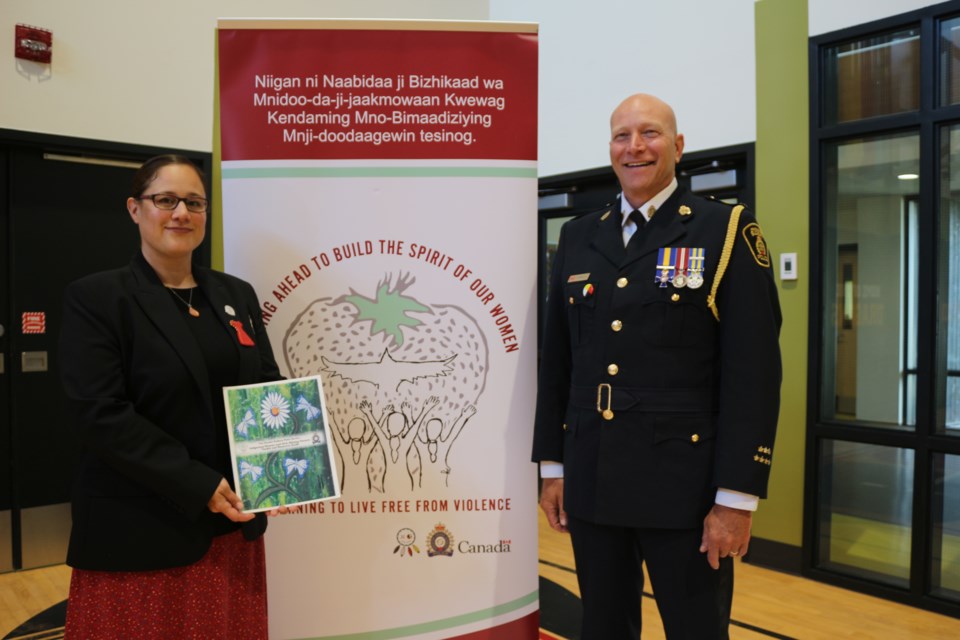Greater Sudbury Police Service says it's continuing to build the bridge that connects the local police force with the city and surrounding area's Indigenous community.
On Aug. 29, GSPS unveiled its brand new Indigenous Women and Girls Missing Persons Toolkit and Resource Guide. At its core, the toolkit is a document that helps families navigate the system and understand what tools and services are available to victims and what to expect from a police investigation in the case of a missing person.
The concept for the guide was borrowed from an existing toolkit that is employed by the Saskatoon Police Department.
"I was at a conference in Winnipeg and the Saskatoon Police Department talked about how they had a toolkit ... (so) we took those resources and our community built it for the resources that are available here (in Greater Sudbury)," said GSPS chief Paul Pedersen.
"This is very much built in this area for our people here, (and) we really like the uniqueness of it."
At the forefront of the goals the toolkit is intended to achieve is breaking down the barriers that may exist between Indigenous communities and their local police service.
"I sure do hope it breaks down some of the barriers," said Pedersen. "That's our intention with this whole strategy, it's trying to be as transparent and open as we possibly can. This is not something that we're forcing on anybody, it's an offering, so we hope that those who take this offering take it with an open heart and look at it and ask those questions."
The toolkit provides a wealth of information and resources for dealing with a missing persons case. Key information about how to report a missing person is included in the guide, along with social media tips, amber alert guidelines, emotional support options such as crisis intervention services and a sample of what a missing person police report looks like and how to fill it out.
Greater Sudbury Police Service is one of just a few Ontario police detachments that has an Aboriginal liaison officer, a role that is filled by Cst. Shannon Agowissa here in Sudbury.
Agowissa had the honour of officially unveiling the toolkit on Thursday and spoke about how it will help in building a proactive, rather than reactive, approach to cases of missing Indigenous women and girls.
"It is so important to have a good relationship. They say you want to have that good relationship foundation before we have a crisis," said Agowissa. "Doing something like this where we're trying to make positive change when something isn't immediately going on in the community. We do know we have lots of Indigenous members of our community that have been affected by missing and murdered women and girls and we're just trying to do our part."
The toolkit is part of the GSPS Looking Ahead Project, and with the official launch of the kit now behind them, the next step is to promote it and get it into the hands of as many community members as possible.
"The Looking Ahead Project, everywhere we go in the community we have booths, we've attended pow-wows, post-secondary institutions, there's word of mouth, social media, we're going to have it on the website," said Agowissa. "But it's also for the officers who are going to be out on the road taking the calls, they'll know that it's available to them to offer to the families."
For a copy of the toolkit, contact GSPS at 705-675-9171, or visit them online at gsps.ca.
